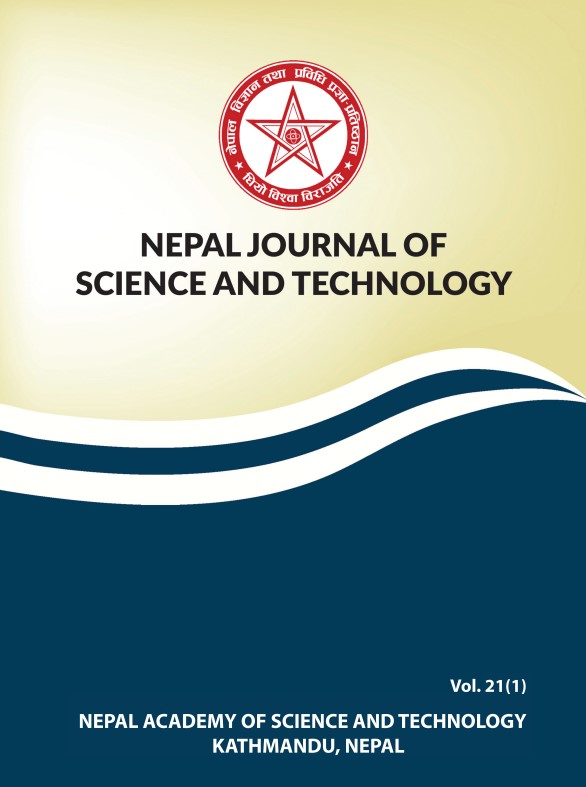Soil Carbon Fluxes and Sensitivity Analysis – A Study in Pinus roxburghii Forest
DOI:
https://doi.org/10.3126/njst.v21i1.49909Keywords:
Pinus roxburghii forest, Soil respiration, Soil temperature, Sub-tropical forest, Soil water contentAbstract
The predicted increasing atmospheric carbon dioxide (CO2) level is responsive to altering the future climate, and a small change in the soil carbon may significantly affect the forest carbon cycle and climate system. Soil respiration (SR) and its influencing factors like soil temperature (ST), soil water content (SWC) and surface litter-fall were measured monthly over one year in a sub-tropical Pine (Pinus roxburghii) forest of Bhaktapur district located in central Nepal to determine the SR of the forest and, its variations and sensitivity. The results showed that SR varied to the changes in ST by an exponential significant positive correlation between them. The optimum SR was observed between 10 and 22ºC, and the highest SR were obtained above ST at 20ºC. The temperature sensitivity value of SR (Q10) was estimated at Q10 = 2.13. The significant exponential curve represented the effect of SWC on SR. The higher SR rate was mostly measured between 10 and 25% SWC. The monthly and seasonal variations of the SR rate were consistent with the ST, SWC and litter-fall variations. The study showed that the combined effect of temperature and precipitation might be the major cause of SR variations; however, ST is adequate for increasing SR. Hence, the warming further enhances carbon emission from the forest floor and inversely increases carbon to contribute to climatic change through this pine-dominated forest stand structure.
Downloads
Downloads
Published
How to Cite
Issue
Section
License

This work is licensed under a Creative Commons Attribution-NonCommercial 4.0 International License.
Authors retain copyright and grant the journal right of first publication.




